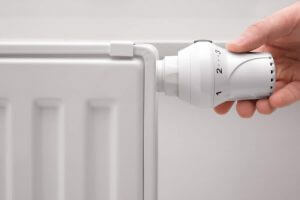Condensation on windows
Are you experiencing high levels of condensation on windows and walls in your home as winter closes in? Sometimes it can be difficult to prevent condensation on windows and walls around your home. As one of the most common causes of damp and increased moisture within your home, condensation can very quickly lead to extensive mould growth. If left untreated for prolonged periods, mould growth can cause health issues and lead to breathing complications down the line. Below, our damp proofing experts have put together a short guide to managing condensation on windows and other areas of your home.
If you are experiencing high levels of condensation on windows in your home, or are beginning to see a build-up of mould on window sills and corners of the room, get in touch with our condensation control experts today. You can arrange for a specialist to visit your property and carry out a comprehensive survey and provide additional information on managing moisture in your home.
 How can I reduce condensation on the inside of windows?
How can I reduce condensation on the inside of windows?
Did you know that an average household of 4 people creates over 100 pints of moisture every week just from cooking, showering and even breathing? If poorly managed, this moisture can very quickly create condensation & mould. Below are just a few ways to manage condensation around the home:
How to stop condensation on windows by producing less water + moisture
All the moisture created in your home has to go somewhere. If your home is poorly insulated, this excess moisture will begin to collect on walls and windows throughout the house. So, how can you produce less moisture in the home?
- Avoid drying your clothes indoors. If the weather is particularly poor, we recommend sectioning off your bathroom/another room in your home by closing the door and opening the window/turning on the extractor fan. Remember, never dry your clothes on the radiators – as this prevents your home from being thoroughly heated.
- Ensure all tumble dryers are correctly venting moist air outside (unless you are using a condensing tumble dryer).
- Make sure all extractor fans in your bathrooms and kitchen are clean and extracting as much moisture as possible when used.
- When cooking, try and use pot lids and cook at lower temperatures once the water has boiled.
Condensation control through ventilation
In the winter months, ventilating your home through an open window can be difficult when trying to keep your home warm. So, what other methods can be used control condensation levels?
- Provide space for your furniture around the home. Ensure wardrobes and beds aren’t cramped up against walls. This allows air to effectively circulate around larger items of furniture.
- Ensure that your kitchen and bathrooms are isolated when cooking, bathing or showering. This way, moisture will be excluded to that room alone and benefit more from the extractor fan. This will reduce the overall moisture that flows into other rooms in your home.
- Make use of the trickle vents at the top of your double-glazed units. All windows should be fitted with these small vents, and periodically opening them will allow moisture to ventilate out of your home.
 Heating your home to prevent condensation damp
Heating your home to prevent condensation damp
Putting on an extra jumper and turning the heating off is always a great way to cut back on the energy bills. Unfortunately, the lack of heat in your home, coupled with the increased moisture, can very quickly create damp patches on walls around your property. So, how can I heat my home efficiently without having to pay out for a huge utility bill?
- Make the most of your programmable central heating controls. In the colder months where you are experiencing higher levels of condensation, be sure to heat your home throughout the day – at a lower heat and even when you aren’t home.
- Make sure all radiators are correctly working and have been bled to ensure optimal thermal efficiency throughout the home.
- Ensure your radiators are fitted with accurate and working thermostatic valves – this will only help in controlling the level of heat in each room and aids with managing your heating costs.
Condensation control
By reducing the moisture content in the air or increasing the air temperature in your home, you’ll be able to reduce the amount of condensation created in your home. If you’re struggling to manage the level of condensation in your home and are experiencing damp and mouldy walls + windows, get in touch with our experienced damp experts today. We’ll be able to provide you with a comprehensive damp survey and identify areas in your home that will benefit from ventilation systems and professional mould removal (where necessary).
To book a survey or for more information please contact our team today on 01793 272085.

 How can I reduce condensation on the inside of windows?
How can I reduce condensation on the inside of windows? Heating your home to prevent condensation damp
Heating your home to prevent condensation damp